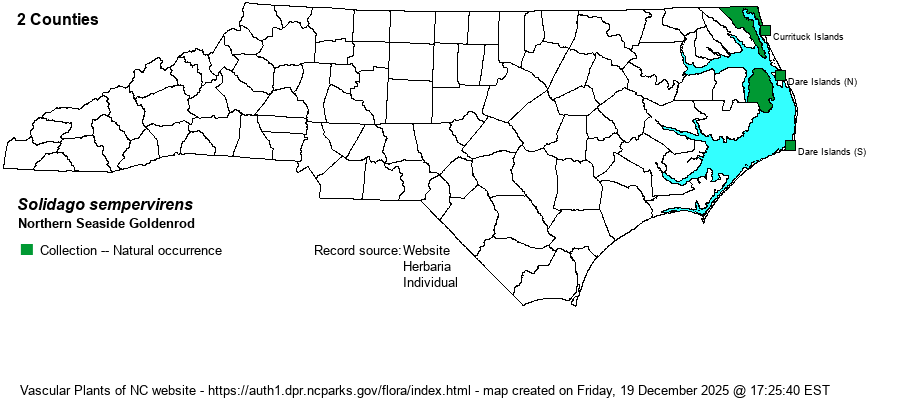| taxonName | relationship | relatedTaxonName | relatedTaxonRefText | relComments |
|---|
|
| Solidago sempervirens | = | Solidago sempervirens var. sempervirens | Gleason and Cronquist (1991) | |
| Solidago sempervirens | = | Solidago sempervirens var. sempervirens | Fernald (1950) | |
| Solidago sempervirens | = | Solidago sempervirens var. sempervirens | Gleason (1952) | |
| Solidago sempervirens | = | Solidago sempervirens var. sempervirens | | |
| Solidago sempervirens | = | Solidago sempervirens var. sempervirens | Kartesz (1999) | |
| Solidago sempervirens | = | Solidago sempervirens var. sempervirens | Vascular Flora of the Southeastern States (Cronquist 1980, Isely 1990) | |
| Solidago sempervirens | = | Solidago sempervirens var. sempervirens | Flora of Virginia | |
| Solidago sempervirens | = | Solidago sempervirens ssp. sempervirens | Flora of North America (1993b, 1997, 2000, 2002a, 2002b, 2003a, 2004b, 2005, 2006a, 2006b, 2006c, 2007a, 2009, 2010) | |
| Solidago sempervirens | = | Solidago sempervirens ssp. sempervirens | | |
| Solidago sempervirens | < | Solidago sempervirens | Radford, Ahles, and Bell (1968) | |
| Source: Weakley's Flora |

